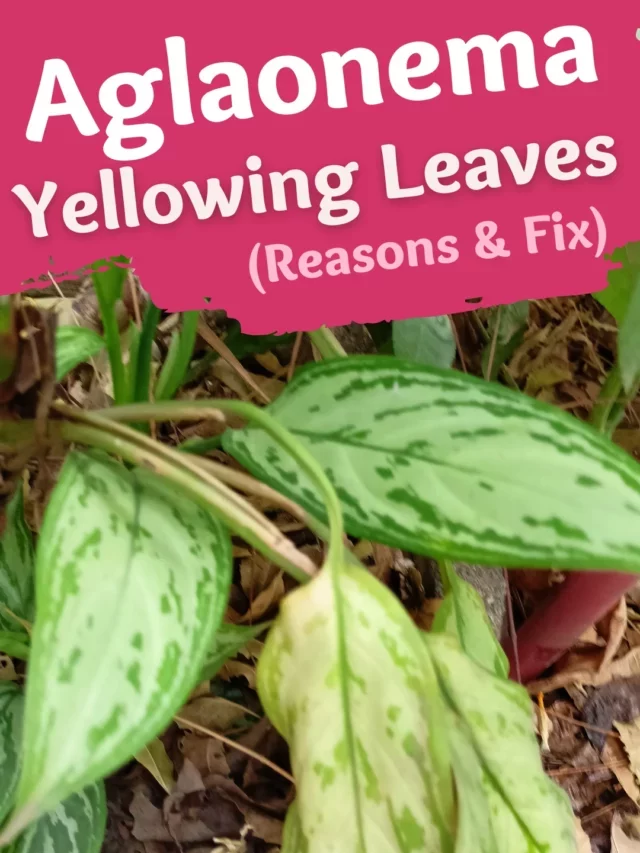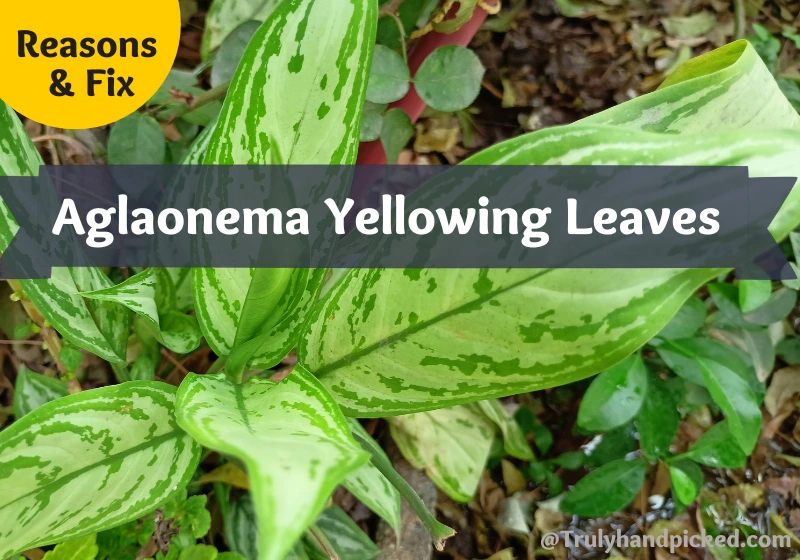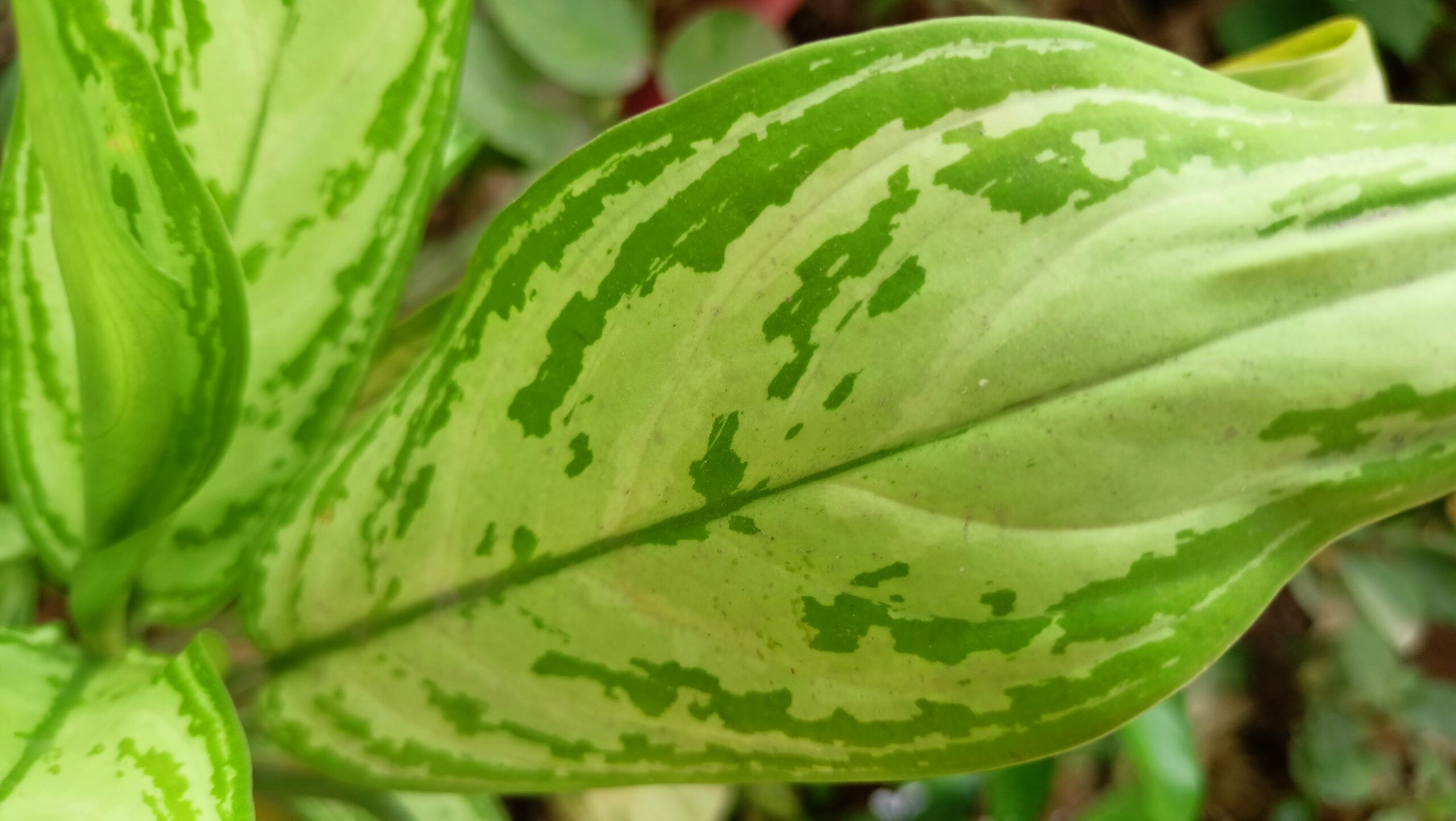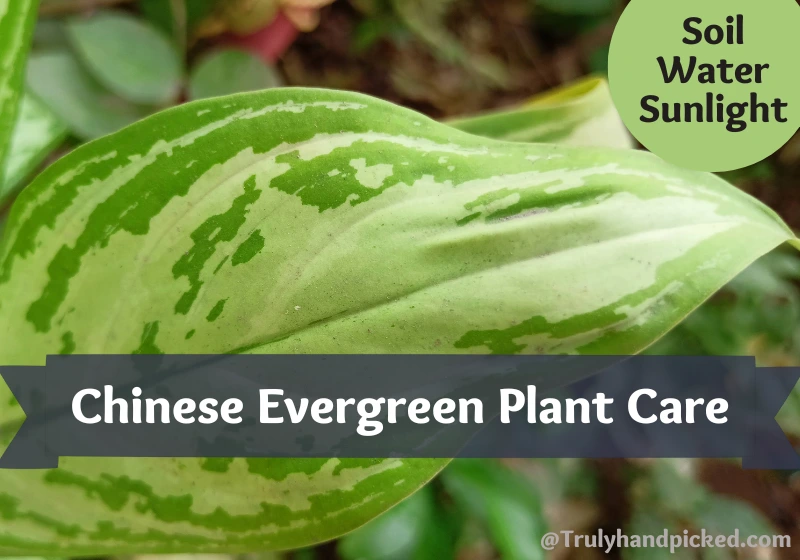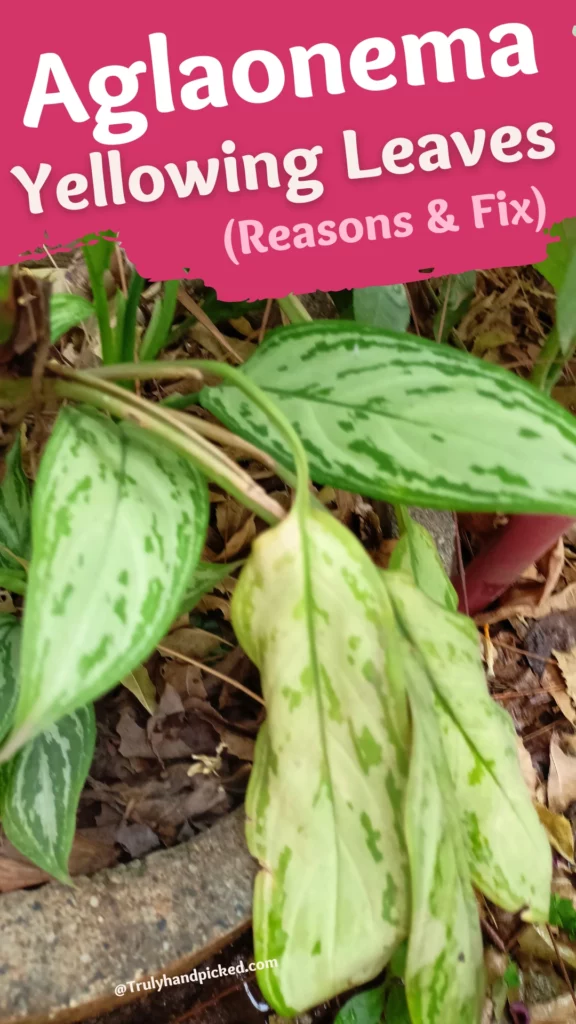Aglaonema aka Chinese evergreen is an ornamental houseplant. This species of arum family can thrive in low light and thus, grows easily as a great indoor plant.
Drooping Aglaonema: Not enough sunlight and uneven watering (over/underwatering) could drive your plant to droop and die. For wilt and weak leaves move to a bright indirect spot. If the whole planter is dry, go for bottom watering and let it soak.
Yellow Leaves: Soggy soil, saturated soil with insufficient nutrients, and root rots are common reasons for yellowing leaves of aglaonema. Don’t often water your plant in winter and instead of overcaring let the soil dry in between watering.
Aglaonema not growing/slow growing: Not enough sunlight and unsuitable climate (sensitive to temperature). Mostly aglaonema plants are slow in winter and grow better in summer. Apart from low light, not enough feed and watering results even stunted growth.
Feed in spring and summer (diluted to half strength) and water once every 10 days or when the top few inches of soil turn dry. And yes, aglaonema is medium growers and not fast as your desire.
Scroll below for a detailed explanation.
Caring for a growing aglaonema plant and giving it the perfect thriving climate is utterly effortless. You just need to give full attention to its basic needs and maintenance prerequisites.
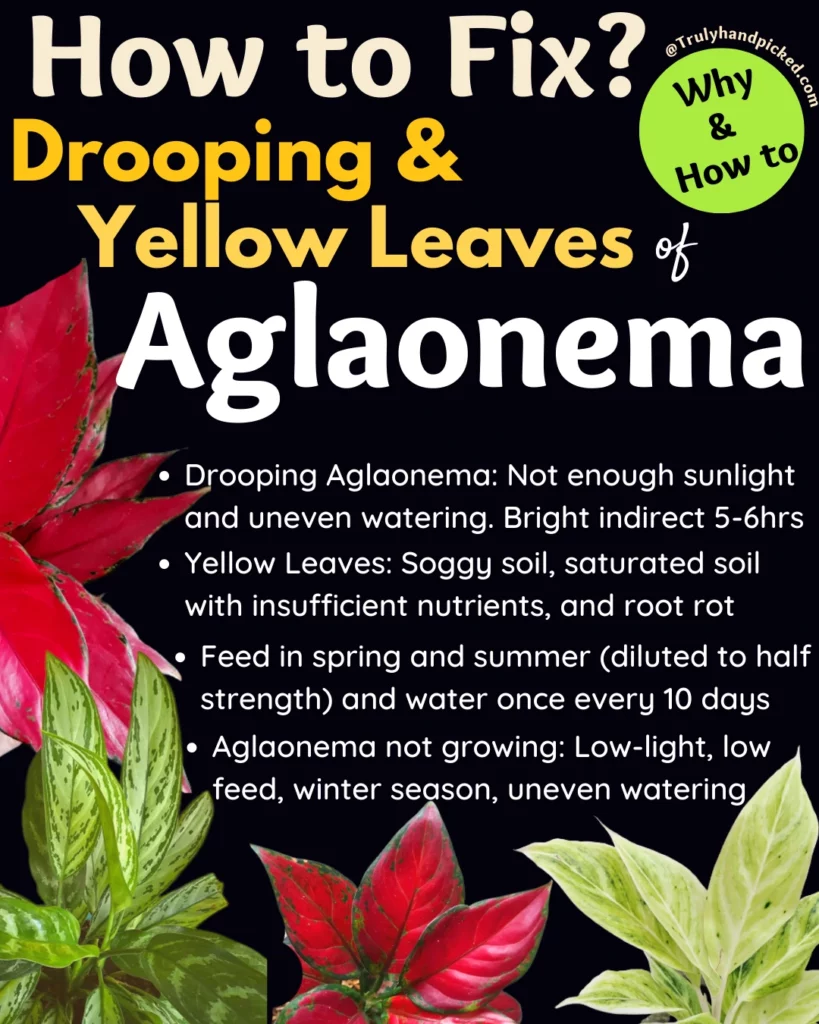
Some gardeners claim that troubleshooting issue asap is another crucial method to keep your indoor aglaonema plant healthy enough.
So, here are some important statistics you should know about a Chinese evergreen plant while growing it as a houseplant-
Quick web-story for mobile users
Related: How to fix leggy hydrangea and drooping leaves
How to Care for Aglaonema: Quick One Liners
Now, let’s learn about the proper caring methods and maintain ace instruction of a growing aglaonema plant in detail-
- Try to make a potting mix combined with peat moss, sandy acidic soil with well-drained quality in a 1:1 ratio
- This plant is moderately thirsty, thus, try to water your plant once every 7-10 days and keep the top surface of the soil dry between the watering session
- Place it in a warm spot where the plant can get bright but indirect sunlight for 5-6 hours a day
- Maintain the temperature between 60-80 degrees F consistently and keep it safe from drafts
- To provide it with the best thriving climate, let the plant stay in a highly humid place and keep the soil evenly moist
- Your plant can get root-rot issues or fungal as well as mildew problems while staying in a low-humid place for long
- Aglaonema plant is a moderate feeder, so, try to feed your plant twice a year like in spring and summer
- Apply any normal water-soluble, slow-release, fertilizer that is suitable for houseplants in a 20-20-20 NPK ratio
- Look for the troubleshoots like leaf drops, stunt growth, and pests infestation and apply the natural remedies accordingly
- Trim out the leggy leaves or disputed leaves or infected stems or overgrown parts from your growing Chinese evergreen plant in time to keep it well-shapes all the time.
Why Is My Chinese Evergreen Leaves Turning Yellow?
Sometimes, you may find that the leaves of your indoor aglaonema are gradually turning yellow or growing with a yellowish hue.
It is not a healthy sign for the beautiful foliage of a Chinese evergreen plant to turn yellow. So, you must pay full attention to find out its real cause and cure it entirely.
Here are some possible causes of yellow leaves of a growing aglaonema plant-
Reasons for Yellowing Aglaonema
- Overwatering: If you water your plant more than its actual needs, you can witness wilted, soft leaves which soon turn yellow
- If you keep your plant in a place with lower or improper humidity
- When you place your plant in a spot for full shade with no light at all
- If your plant couldn’t get 6-7 hours of indirect sunlight consistently
- When you don’t feed your plant properly and it goes under lack of nutrition
- If you don’t treat the pest and bugs problems in time
- When you don’t prune your plant needily and don’t give them enough space to thrive
- And when you have a disturbed root system due to congested planters or soggy water
To deal with these issues and stop the yellow leaves problem entirely, you must take some suitable initiatives in time.
Related: How to save a drooping and dying polka dot plant
Sometimes you may not be able to turn those yellow leaves green again, but at least, you can keep the remaining foliage green and safe from the grasp of a yellow hue, isn’t it? So, here are some must-taken steps in this regard-
How often to water:
Try to water your plant with the proper measurement and don’t water often in winter. You can use a watering scale in this matter if you want. Always let the soil surface completely dry from one watering session to another and don’t water more the 1-inch depth at once. More or less watering once every 10 days is good enough (depends on the climate too).
Related: Reasons and fix for yellow leaves on hibiscus
Maintain Proper Climate:
Maintain the growing climate flawlessly throughout the whole growing session. Make sure the plant can get a high-humid climate with an evenly moist growing medium all the time. Occasionally mist your plant and wipe your plant leaves with a damp cloth/sponge for shiny healthy leaves.
Provide Adequate Light:
Your aglaonema plant may need low light, but make sure it can get that light consistently. You must remember that low light doesn’t mean any light! So, provide your plant partial shade and bright indirect sunlight for 6-7 hours a day.
Keep The Temperature Perfect:
A consistent temperature is also essential to keep the foliage healthy enough. Make sure the temperature couldn’t fall less than 50 degrees F or couldn’t raise more than 80 degrees F, ever.
Related: Reasons for African violets turning yellow
Feed Your Plant Adequately:
Try to feed your plant immediately, as sometimes yellow foliage symbolizes a lack of nutrients in some houseplants. So, try applying some nitrogen-rich fertilizer in liquid form proximately to control the yellow leaves problem right away. Dilute and feed fertilizers at half strength and as mentioned above don’t feed your plants during the dormant winter season.
Fix Pests and Diseases Asap:
Check your plant frequently and never let the bugs or pests bite on the foliage ever. Use misting options or rubbing alcohol or cotton swap with neem oil or soapy water to keep the foliage clean as well as healthy all the time.
Maintain Healthy Roots:
One of the most useful steps to keep the leaves of the Chinese evergreen plant green eternally is to keep the root healthy.
Try to repot your plant in time and make sure the soil never turns water-logged to keep the root system hale and hearty eternally.
If you caught the yellow leaves at their primary stage, there are some effective ways to turn them green again. These tricks are as follows-
- Put your planter in a place with a temperature range that evaporates extra water.
- Remove the infestation of any pest or disease from your plant immediately
- Feed your plant to provide its adequate nutrients to fight the mishaps
- Transplant your plant to a new planter with the whole new potting mix
Related: How to save a philodendron drooping and leaves turning yellow
How to Propagate Aglaonema:
You can propagate an aglaonema plant from both its stem cutting and divisions. A Chinese evergreen or aglaonema plant cannot thrive well when you propagate them in water, due to its fragile root system.
So, we must skip this process here. Let’s find out the easy propagation procedure of the aglaonema plant in rest two patterns-
How to Grow from Stem Cuttings:
- Find out a perfect stem containing 5-6 fresh and healthy leaves out of a fully grown aglaonema plant
- Now, cut that part out along with its nod using a disinfected garden tool
- Remove some of the leaves from the bottom of the stem and dip the end in a hormone powder
- Then, put that cutting in a pot and place it in a warm place
- After this, bring a planter prepared with the needed potting soil and water it to make the soil evenly moist
- Finally, take the cutting and sow it into the potting mix gently by securing the base loose yet firmly
- Place the pot in a warm place full of indirect sunlight and high humidity for 4-6 weeks to get the newly rooted form.
Growing Aglaonema from Divisions:
- Wait for the repotting season, now take the whole plant out of the planter carefully and lose the soil-bound properly
- Once the soil and root grips are loose enough, separate the divisions attentively
- Make sure each section has a healthy stem at the upside and an undamaged root at the bottom
- Now, trim the overgrown roots or diseased roots with a sterilized garden tool
- Finally, plant each division individually in separate planters prepared with moist potting soil
- Keep the plant in a warm highly humid place and let it get bright indirect sunlight there for 6-7 hours a day to give your division propagation the best thrives.
Chinese Evergreen Care: Quick Recap
- Soil: Slightly acidic loose soil with well-drain quality
- Water: Moderate water about once every 7-10 days or till the top of the soil turns dry
- Fertilizer: Any water-soluble liquid fertilizer, twice a year
- Sun Exposer: Sun with partial to full shade
- Climate: Low-light normal room temperature with high humidity
- Hardiness zone: 10 to 12
Related: Why my basil plant is turning yellow and dying
FAQ:
Is Aglaonema Toxic to Cats?
Aglaonema or a Chinese evergreen plant is poisonous to cats or any house pets due to the richness of the insoluble calcium oxalate toxic elements in this plant.
How Often You Should Water Aglaonema?
You should water your indoor aglaonema plant once every 7-10 days or wait till the top soil surface turn moderately dry between the watering sessions.
